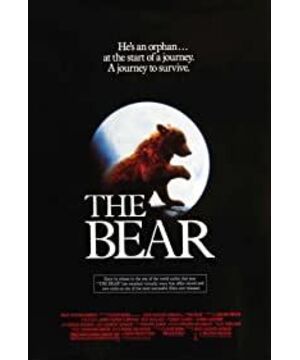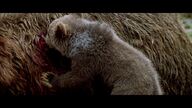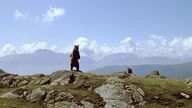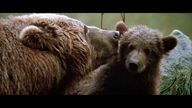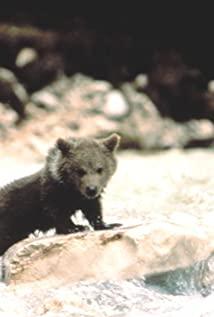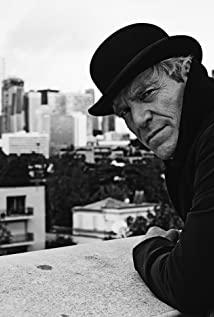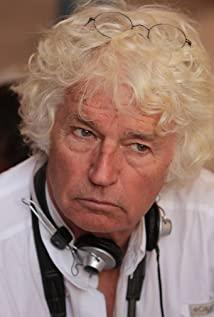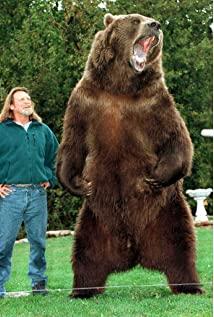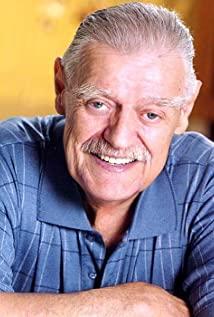This is a poetic film with a bear as the protagonist. In today's world, one of the issues that people are most concerned about is the ecological environment of human beings. The dialectics of history tells us that the unplanned plundering of nature will double the punishment while benefiting mankind. Many rare animals and plants are endangered or practically disappeared from the earth, while the living conditions of human beings have become more severe. The harmony and blending between man and nature is very important.
Director Jean-Jacques Arnault once again uses the method of film to explain the great problems of human concern. Each of his films stands out for being "unprecedented," from "War of Fire," which depicts prehistoric times, to "The Name of the Rose," which reflects medieval life, to "Bear," which features animals. And the difficulty of filming is what frightens film-making connoisseurs. But the results he achieved were equally astonishing.
In October 1988, a large team of 200 Japanese promoters entered the "Bear Mountain" hall of Blopu-Billangu, and they were about to make an important decision. A quarter of an hour later, they unanimously asserted: Arnold's "Bear" will be a good film that has not been seen in a century. It will be extremely profitable in Japan's screenings.
"Bear" was screened for 7 weeks in France, breaking the box office record set by the "Rambo sequel"; in Switzerland and Belgium, people marveled that "the bear beat the rabbit", which was created by Hollywood in the same year and co-starred by live action and animation The comedy "Who Framed Roger Rabbit" was one of the top-grossing films of the year. In Spain, the king and queen will be the first to watch the film, with profits going to the World Wildlife Fund.
"The Bear" struck a chord with audiences. Arnold showed the audience a world that was completely foreign to humans. Here, animals (represented by bears) are the masters, while humans (represented by hunters) are the intruders. Wild bears are emotional and sometimes rational (as in "Carl"'s "forgiveness" to Tom), whereas "civilized" humans, who have mastered the use of fire and tools, appear so mad and irrational. Because Arnold uses anthropomorphic techniques, which also include the use of animal "subjective lenses" and dream processing, the ideas he wants to reveal become easy to understand and self-evident. The two bears live here according to the laws of nature, which are "survival of the fittest" and rather cruel species elimination. "York" and "Carl" have different experiences and traumas (the film shows two aspects of mind and body), but they use the unique "language" of bears to express through their sense organs such as smell and touch Emotion and communication, such as "York"'s sad eyes and pained wailing after his mother's death; affectionate licking and sympathy for the injured "Carl"; Humans feel the fear of death; "Carl" caresses "York" in the bear cave... All the joys, sorrows and sorrows of bears can be experienced by people, so they have obtained a shocking artistic effect. Arnold shoots the bear "York" as a child (such as catching frogs, playing with turtles, rolling carelessly on the hillside), so the audience seems to see a story of how a child grows up through many difficulties.
Noel Boisson's editing has undoubtedly made a remarkable contribution to the composition of this story. If "York" and "Carl" made a wonderful performance, it is better to say that Arnold and Boisson created a wonderful performance of the bears. Because of this outstanding contribution, they won the 1989 French film Caesar Award for best director and best editing two awards is well-deserved.
During the filming of "The Bear", Michelle Palpo shot the nearly hour-long documentary "Details on the Shooting of the "Bear" Film, which revealed the hard work that Arnold and his crew put into the film's success. Although Arnold also has deep pockets in production like American films, he chose to go in the opposite direction of American films in terms of creation. He spends his funds on the subtlest of explorations: making feelings palpable. When the audience watched the film, they almost completely forgot the camera, and they forgot that they were watching a story about the life of a bear. The integration of man and animal, man and nature has reached an extremely perfect level.
Arnold's filming team is like a zoo, taming all kinds of beasts. According to the shooting requirements, the animal trainers rehearsed the movements of the beasts over and over again. "York" is clever and clever, and can always meet the movement requirements quickly. The most difficult part was the scene where "Carl" was injured and escaped. The trainer taught him to run on three legs, which was really exhausting. Actor Jackie Callio dared to do something no actor would dare to do. The encounter with "Carl" beside the cliff and the spring did not use stuntmen or traditional montage techniques. In one picture, the human bear The confrontation, an angry 'Carl' nearly bit his head off, the cougar's fight with 'York', filmed just as hard, but Arnold stubbornly walks toward his goal, trying to find whatever he can think of to achieve.
Arnold's film made human beings close to animals and made human feel the emotion of bear. In turn, the life and emotion of bear infected human beings, making human beings realize that this crazy and irrational plunder will eventually endanger human existence.
"Bear" is a wake-up call to humanity.
View more about The Bear reviews


